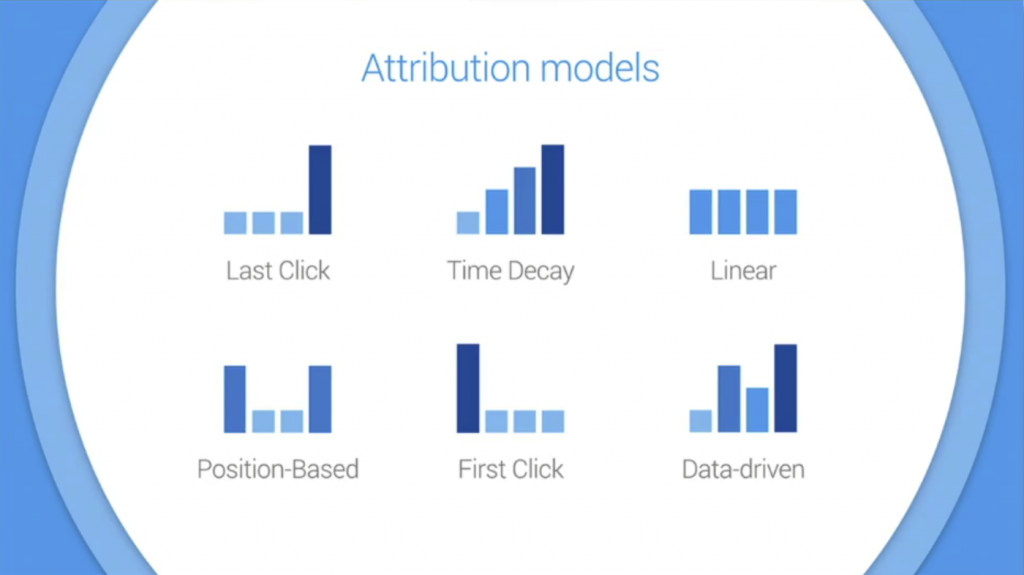Best Attribution Models For SEO
More than 50% of worldwide website traffic clicks on organic search results.
In a world where organic search attracts so many visitors, your brand’s name should be among the first results on people’s screens. If it is, you can start the sales journey of leads you couldn’t have reached in any other way.
When the subject is the importance of organic search results, the first term you should think of is SEO. Search engine optimization will enable you to reach the right people from the fifty percent I’ve mentioned initially: once these people see your web page, they’ll be more likely to move down your marketing funnel and become customers. SEO can also help you remind your brand’s name to a lead that already knew about you.
But how can you measure the contribution of organic search and SEO to your marketing efforts? Can you even be sure that SEO is the leading cause behind your revenue? Read more to learn about these questions and their answers.
Why do we need marketing attribution?
It’s hard to maximize revenue and sales when you don’t know what’s leading to them. Marketing attribution evaluates the importance and effectiveness of each touchpoint in a customer’s journey so that you can understand what eventually led to a purchase. With this knowledge comes great power because you can direct your focus to the channels that drive sales and revenue. In terms of SEO, this means being able to measure the contribution of your SEO strategy to conversions.
Maybe SEO is the best for the later touches when a customer is trying to decide and not for the top of the funnel or maybe an ad campaign is the best for the first touch and not the last touch. You can uncover all these insights using marketing attribution.
Perhaps the importance of marketing attribution can best be shown with an example. Let’s say that you put out two different PPC ads and want to analyze their effectiveness. By using an attribution software, you look at customers’ journies and see that both ads led to the same landing page and then conversions. Still, the first ad resulted in significantly more purchases than the second one. The first step, the PPC ad, was the independent variable and created more ads like the first one. This example may be the simplest form of attribution, yet the conclusion it leads to is very important. Knowing this, you can create more ads like the first one and increase sales.
So, marketing attribution is crucial because…
- It helps marketing and sales teams create more compelling content. Marketing attribution enables you to tell what’s working and what’s not in your content marketing strategy. This knowledge is great because it helps companies generate demand from new leads and existing customers.
- It is useful for budgeting. Companies that are unsure about their attribution models (or worse, those that do not use one) put their money into marketing channels and strategies without knowing if they’ll get their money back. Marketing Attribution lets you make allocations that are based on data, not assumptions and hopes.
- It simplifies marketing and sales. In the status-quo, customers’ interactions with companies are more complex than ever. There are different channels and strategies that brands follow for each segment. Attribution modeling helps businesses define starting points, prioritize channels and maintain their focus.

How do you measure marketing attribution?
Thankfully, you don’t have to build intricate statistical models from scratch to measure attribution. There are several pre-built marketing attribution models that you can choose from, including the Last-touch, Linear, and Time Decay models. These models are simply a set of rules that assign credit to touchpoints in differing ways. By using the more appropriate model for your situation, you can assess the effectiveness of the marketing channel/strategy in question.
Marketing attribution models can be separated into two categories: single-touch and multi-touch. As their name implies, single-touch models assign all credit to one touchpoint while multi-touch models assign credit to multiple points. Again, the most accurate model will be the one that’s a better fit for the analysis you’re performing.
However, you may still be struggling with choosing a suitable model. Below are the use cases, advantages, and disadvantages of each attribution model that you can use for SEO.
Best Attribution Models For SEO
The best model will change depending on the length of your sales cycle, your SEO strategy, and the amount of accuracy you’re aiming for. While reading about each attribution model, keep in mind the touchpoints at which SEO plays a crucial role for your brand. If SEO is important for you to create brand awareness, it will be one of the early touchpoints. If you use it to reach specific segments that are already interested in your products, then it may be one of the later touchpoints.

Last-touch
Also known as the Last Interaction model, the Last-touch model assigns all credit to the final touchpoint. So, it helps you measure the value of the final touchpoint in a conversion journey. For instance, if a lead had seen your PPC ad, then later clicked on your blog post, signed up for a demo, and bought your product, the Last-touch model would assume the main reason behind the sale was the demo sign-up.
From this example, it’s easy to assume that the Last-touch model would be inaccurate as it fails to account for the early interactions that had a role in the conversion. This is a valid worry for businesses with long sales cycles, and if you’re not trying to assess the success of a final touchpoint, you shouldn’t use this single-touch model. However, the Last-touch model is handy if you want to measure the success of specific last touchpoints. For instance, if you want to see whether or not your demo leads people to buy the actual products, you should be using this single-touch model (you could also use the last Non-direct Click model in this case.)
The Last-touch model is also helpful for businesses with short sales cycles that do not last for long periods and consist of one or two touchpoints.
Linear
The Linear attribution model is a multi-touch attribution model that gives equal weight to each touchpoint. It assumes that all customer interactions with the brand had an equal impact on the sale. Following the same example from the Last-touch model, Linear attribution would weigh PPC, content, and product demo equally, even if the demo was what convinced the customer to buy.
A multi-touch attribution model like the Linear model for businesses with long sales cycles is more appropriate. This is because many steps impacted the sale, and assigning all of the credit to a single touchpoint would mean giving the early interactions’ credit to the wrong step. However, you could also argue that the linear model leads to inaccurate conclusions because it ignores the differing impacts of touchpoints and treats them all the same. If this is a problem for your analysis, then the Time Decay model (explained below) may fit you better.
While using the linear model, it’s essential to know the touchpoints you’re assigning credit to. In order to do this, you should be able to see the step-by-step journeys of users. Analytics software like HockeyStack enable you to see the touchpoints of customers up close. This magnified view includes users’ session durations, initial and last interactions, and more.
Pro Tip:
To see HockeyStack’s funnels, step-by-step user journeys and more, just try out the live demo! 🙂

Time Decay
The Time Decay attribution model is another multi-touch model that businesses with long sales cycles can use. Unlike the Linear model, Time Decay assigns more credit to the touchpoints closer to the conversion. Using the same example, if you were to analyze the conversion of a customer, the Time Decay model might assign 20% credit to PPC, 30% to content, and 50% to the product demo. So, the Time Decay model assumes that the touchpoints closer to the sale have more considerable impacts on leads.
The Time Decay model is thus useful if you want to measure the performance of points like demo or free trial sign-ups. If you choose the Time Decay model instead of Last Touch for this purpose, you can avoid inaccurate conclusions caused by ignoring the early touchpoints. The Time Decay model can also help you improve ROI since the last touchpoints tend to impact revenue significantly.
Unfortunately, the Time Decay model also has similar downsides to the previous models. For instance, the point at which a lead comes across your brand’s online presence for the first time (thanks to your SEO efforts) may be one of the most detrimental points (if they hadn’t heard about you, they wouldn’t have moved onto the other touchpoints.) In this case, the Time Decay model would fail to account for the importance of awareness, and it would’ve assigned the credit of SEO to a free trial or demo.

Conclusion
There is no definite answer to “What’s the best attribution model for SEO?” because the “best” model changes from company to company. While a Last-touch model may be the best for brands with short sales cycles, a Time Decay model may better fit companies with longer sales processes. You may choose to go through trial end error before deciding on the model you’ll use. This way, you can weigh the advantages and disadvantages’ impacts on your analysis better.
However, you shouldn’t let the number of options scare you. Avoiding marketing attribution and ignoring its benefits will cost you customers, money, and time.
FAQ
Since SaaS companies’ analytics needs and characteristics are different, the best attribution model changes from brand to brand.
Attribution is assigning credit to marketing channels and touchpoints and analyzing their contribution to conversion. It helps in optimizing marketing and SEO strategies.
Standard attribution models include the linear, position-based, and time decay models.



